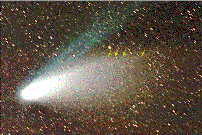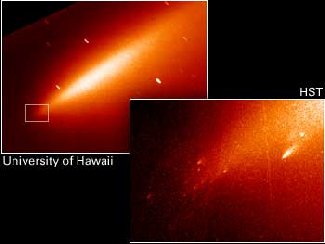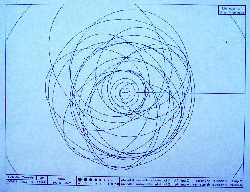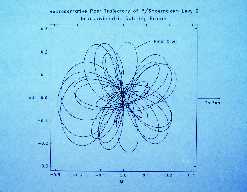Click on image for full size
National Astronomical Observatory of Japan
Comet Hale-Bopp
Hale-Bopp continues to offer surprises as astronomers study the comet. Using the Hubble Space Telescope and the International Ultraviolet Explorer, astronomers have found that there are distinctly different ices in the comet's nucleus, the nucleus is huge, and the nucleus is extremely active.
The comet's nucleus seems to be erupting upon itself. Astronomers witnessed the comet spew out dust in intermittent bursts. The surface seems to be an incredibly dynamic place, with 'vents' being turned on and off as new patches of icy material are rotated into sunlight for the first time.
The nucleus' structure itself is more complex than astronomers had thought. Astonomers theorized that trace gases were contained within water ice. According to Hubble Space Telescope observations, however, Hale-Bopp's nucleus has trace components contained within their own ice structure, with water ice remaining separate and uniform.
In addition, the nucleus is tremendously large. Astronomers have estimated Hale-Bopp's nucleus to be 19-25 miles (30-40 kilometers) in diameter. Comets are thought to have a nucleus of about 3 miles (5 kilometers) on average.
Chemically speaking, Hale-Bopp also has some unusual characteristics. Most interesting is the detection of ionized hydrogen carbon monoxide (HCO+) in the comet. This compound has never been noticed in a comet before. Other chemicals found in the comet include, sodium (Na), sulfur monoxide (SO), ionized carbon monoxide (CO+), cyanogen radical (CN), and water (H2O).














